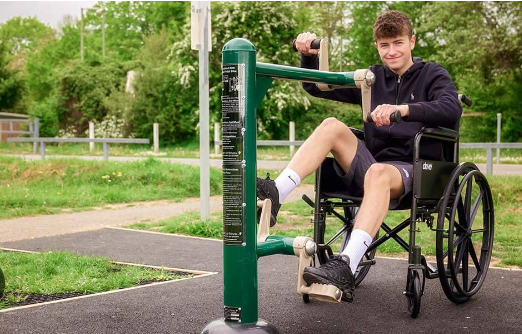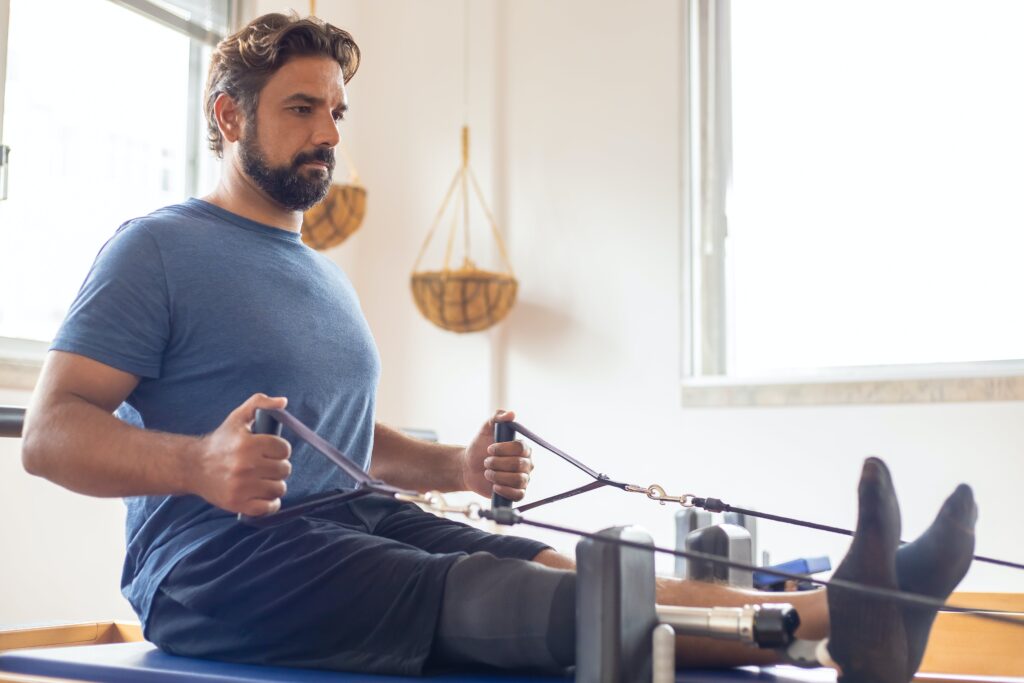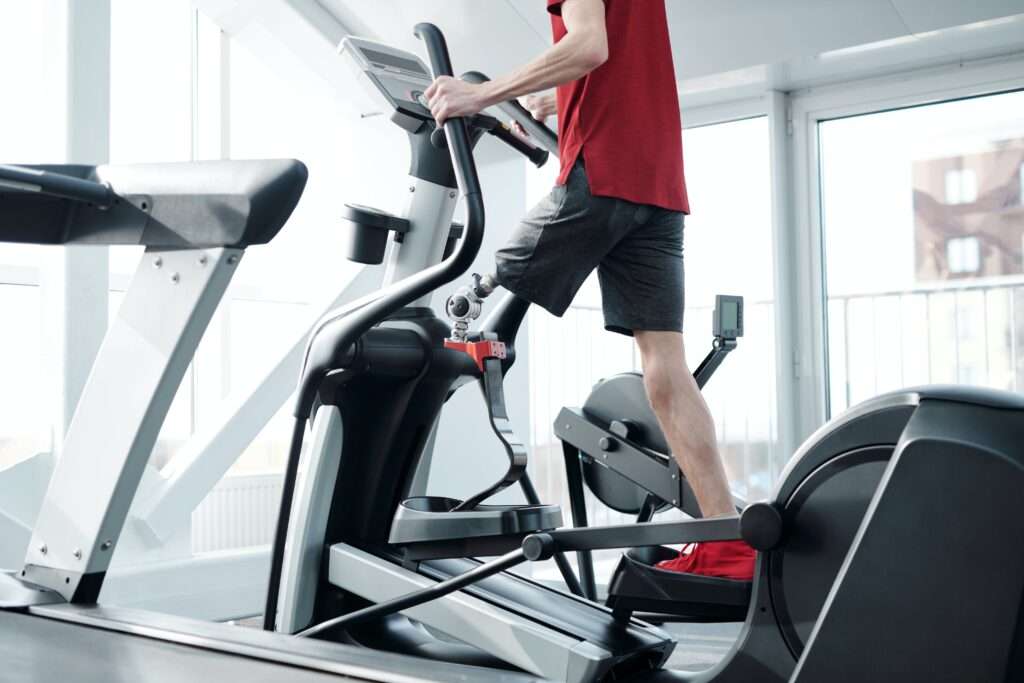
Types of fitness equipment available for people with disabilities
There are various types of fitness equipment designed to accommodate people with disabilities, providing inclusive and accessible workout options. Here’s a list of some common types of adaptive fitness equipment:
- Adaptive Exercise Machines: These are modified machines that can be used by individuals with limited mobility or strength. They often feature adjustable seats, supportive restraints, and accessible controls.
- Arm exercisers: These machines allow people to exercise their arms and shoulders without using their legs. They are available in a variety of styles, including tabletop models, wall-mounted models, and free-standing models.
- Resistance Bands: These bands offer a versatile way to perform strength training exercises. They are suitable for individuals with limited mobility or wheelchair users and can be used for a wide range of exercises.
- Hand and Ankle Weights: Adjustable hand and ankle weights can be useful for individuals who have limited mobility or strength in their limbs.
- Parallel Bars: Parallel bars provide support for individuals with mobility challenges, allowing them to practice balance, strength, and stability exercises.
- Transfer and Lift Aids: These aids are not exactly fitness equipment but are essential for individuals with mobility challenges. They assist in transferring from wheelchairs to workout benches or other exercise equipment.
- Recumbent Bikes and Handcycles: These are designed for individuals who need support or prefer a seated position while cycling, including those with lower body disabilities.
- Adaptive Cardio Equipment: There are adaptations for standard cardio machines like treadmills and ellipticals to make them more accessible for people with disabilities, including features like lower step-up heights and easier-to-reach controls.
- Adaptive bicycles: These bicycles are designed for people with disabilities, such as wheelchair users or people with limited mobility in their legs. They have features such as adjustable seats, hand controls, and foot pedals that can be moved or removed.
- Rowing machines: Rowing machines are a full-body workout that can help improve cardiovascular health, strength, and endurance. They are available in adaptive models with features such as wider seats and adjustable handlebars.
Tips for Making Workouts More Accessible

- Accessible Facilities: Ensure your fitness facility or space is accessible to all. This includes ramps, wide doors, and accessible parking spaces.
- Education and Training: Trainers and staff should be trained in how to assist individuals with disabilities, use adaptive equipment, and modify exercises.
- Provide a variety of equipment options: Offer a variety of fitness equipment options so that people with different disabilities can find equipment that works for them.
- Be accommodating: Be willing to work with people to find ways to make exercises accessible to them. For example, you may need to help people transfer to and from equipment or modify exercises to meet their individual needs.
- Adaptive Exercises: Modify exercises based on individual needs. Offer alternatives or variations for exercises that might be challenging due to a disability.
- Clear Communication: Provide clear, easy-to-understand instructions and guidance. Use various communication methods to cater to different needs (verbal, visual, etc.).
- Adaptive Equipment and Tools: Invest in adaptive fitness equipment to cater to a wide range of abilities. Ensure that the equipment is maintained and regularly checked for safety.
- Personalized Approach: Recognize that everyone is different. Tailor workout plans to accommodate each person’s abilities and needs.
- Inclusive Environment: Foster an environment of inclusion and support. Encourage respect and understanding among all participants.
- Seek Feedback: Regularly seek feedback from individuals with disabilities to understand their needs and how to improve the accessibility of your fitness programs.

Here are some additional tips for making your workouts more accessible to people with specific disabilities
- For wheelchair users: Make sure that your facility is wheelchair accessible, including the workout area and locker rooms. Provide wider doorways and ramps where needed.
- For people with visual impairments: Provide audio instructions for exercises and equipment use. Make sure that your facility is well-lit and that there are no obstacles in the way of people who are visually impaired.
- For people with hearing impairments: Provide written instructions for exercises and equipment use. Make sure that your facility has a quiet area where people with hearing impairments can exercise.
- For people with cognitive disabilities: Provide one-on-one assistance to people with cognitive disabilities. Keep exercises simple and easy to follow.
Creating an inclusive and accessible workout environment involves a combination of equipment, training, empathy, and a commitment to accommodating diverse needs.By following these tips, you can make your workouts more accessible to everyone and help people with disabilities achieve their fitness goals.

